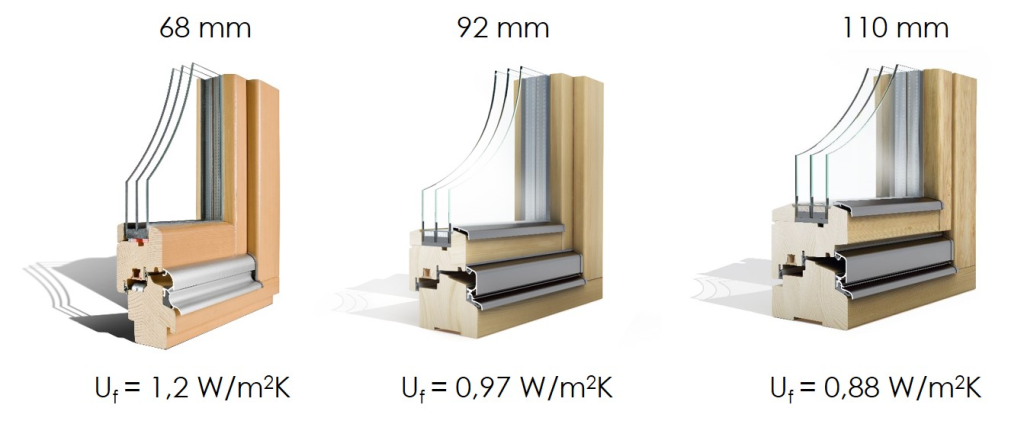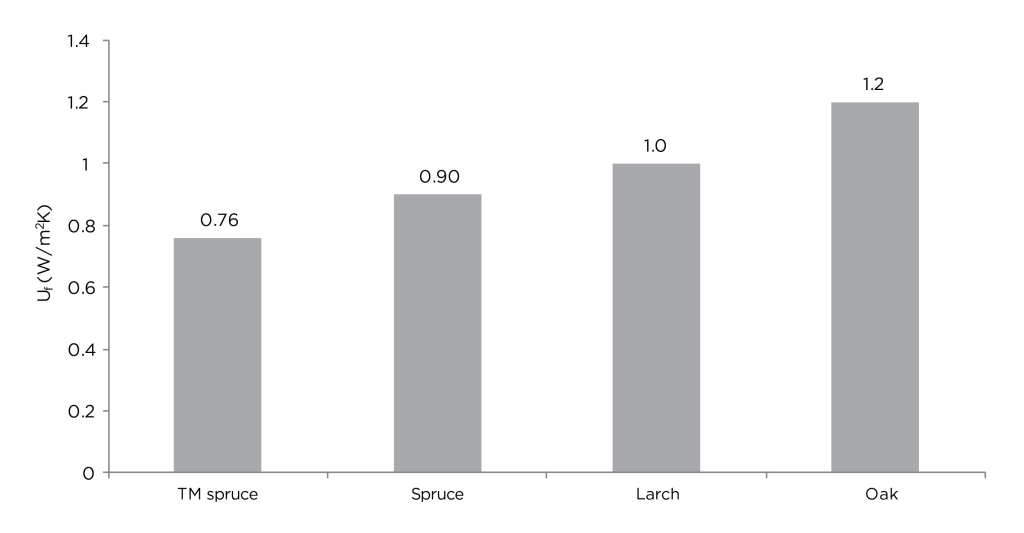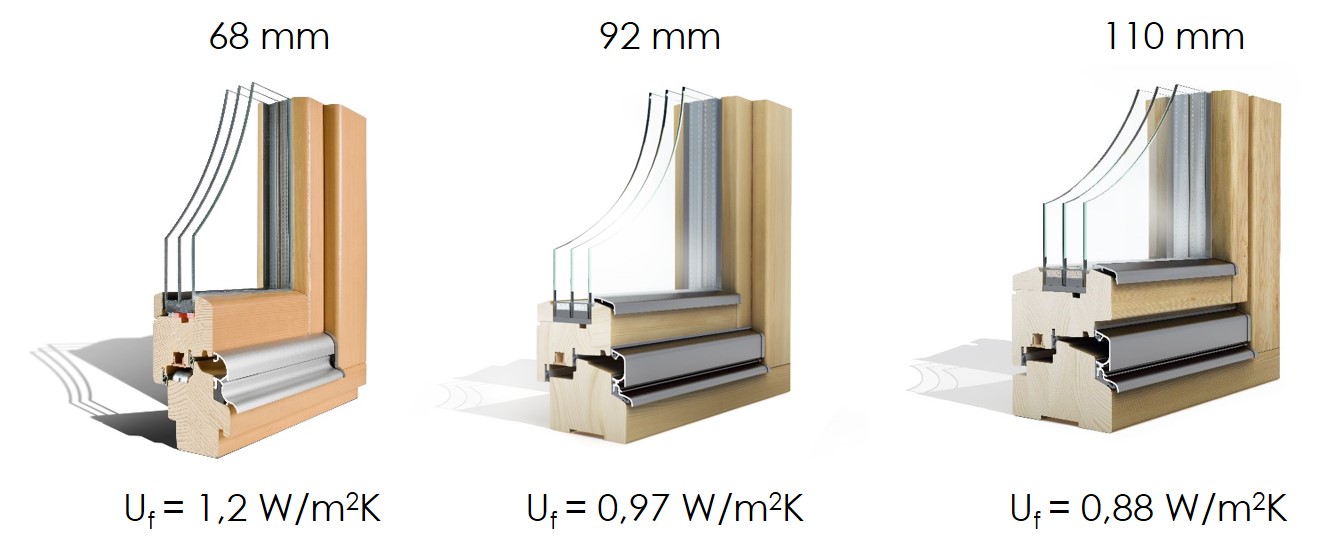Thermal insulation of window profile is expressed in its thermal transmittance (Uf) with unit W/m2K. Uf is dependent on (I) thickness of profile (e.g. 68 mm, 78 mm, 92 mm, 110 mm), (II) used wooden species and (III) shape or detail of profile.
1. Thickness of wooden window profile
It can be generally considered that Uf is increasing with increasing of profile thickness if we compare similar window profiles.

Influence of thickness of profile on Uf
2. Wood species
Wood species differentiate among themselves also in thermal conductivity (λ) which is basically dependent on wood density and moisture content. Generally, λ of wood is increasing with increasing of its density at the same wood moisture content. λ of spruce is 0.11 W/mK, larch 0.13 W/mK, meranti 0.15 W/mK and oak 0.18 W/mK. Very good λ has thermally modified TM spruce which is 0.09 W/mK. Consequently, also Uf is changing with the use of different wood species as is presented at following diagram with an example of 92 mm wooden window profile with air insulation cavities (Nature E92).

Influence of wood species on Uf of window profile with thickness of 92 mm and insulation air cavities
3. Shape/detail of profile
Even at the same thickness of wooden window profile and use of same wood species, Uf can be different due to the shape and details of window casement or frame, number of seals, position of aluminium rain protection profile, use of insulation air cavities … It is generally recommended that two seals are installed and that aluminium rain protection profile is not in contact with wood and positioned deep in window profile.

Influence of position of aluminium rain protection profile and number of seals on Uf

Influence of the shape of casement and frame on Uf


